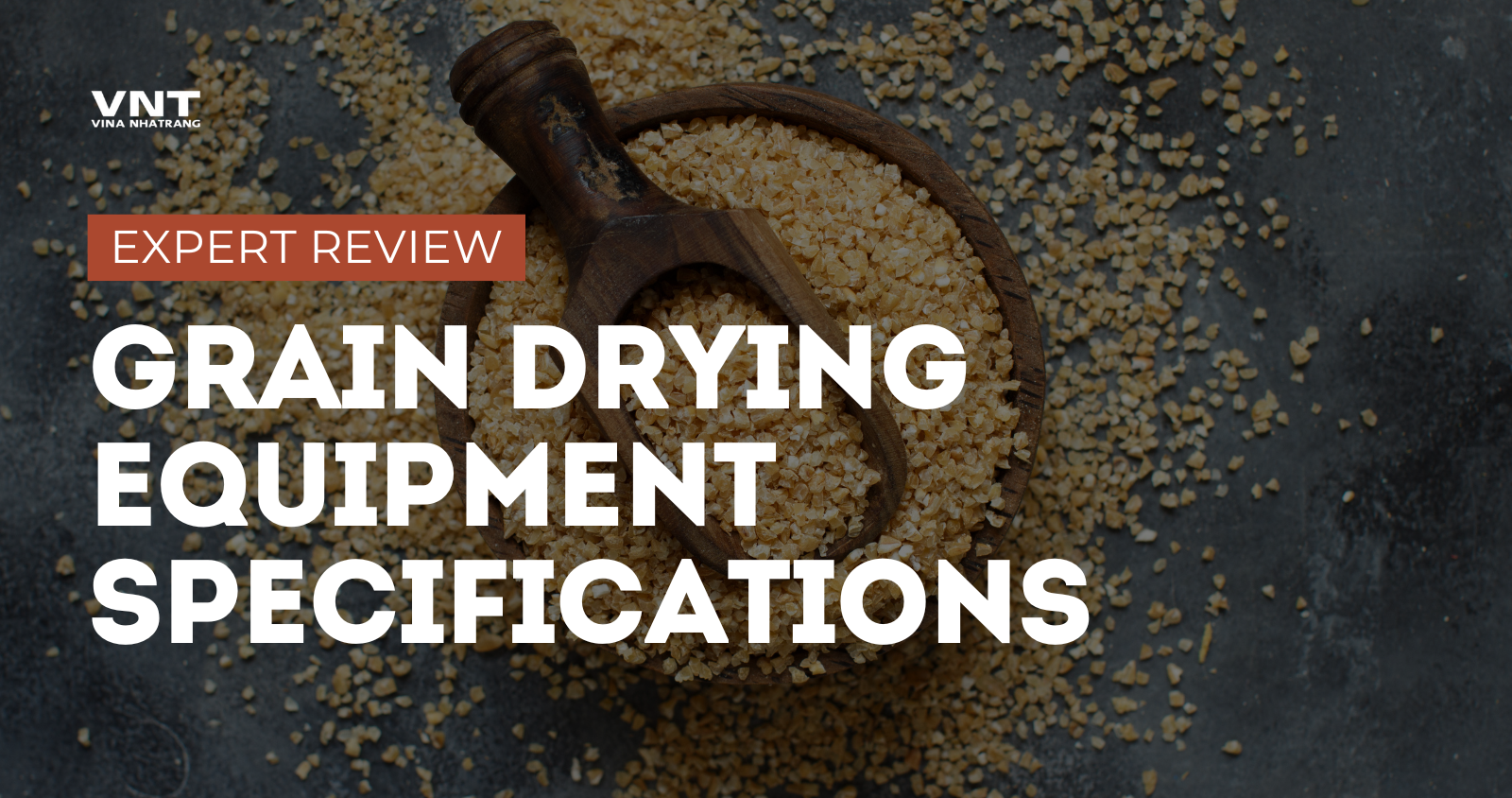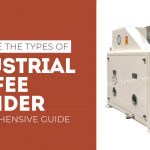The difference between profit and loss in today’s agricultural market often comes down to operational efficiency. At the heart of this efficiency lies your grain drying system – a critical component that can either drain your resources or significantly boost your bottom line. Modern commercial grain dryers have evolved dramatically, with cutting-edge specifications that can reduce energy consumption by up to 35% while improving grain quality and throughput. However, navigating these specifications can be overwhelming without proper guidance. This comprehensive guide breaks down the essential specifications you need to understand before investing in commercial grain drying equipment, empowering you to make an informed decision that will benefit your operation for years to come.
Understanding Commercial Grain Dryer Types and Their Specifications
Before diving into specific specifications, it’s crucial to understand the main types of commercial grain dryers available on the market today:
Continuous Flow Dryers
Continuous flow dryers process grain without interruption, making them ideal for high-volume operations. These systems typically feature:
- Capacity Range: 500-10,000 bushels per hour
- Energy Efficiency: Moderate to high, depending on heat recovery systems
- Drying Uniformity: Excellent with proper column thickness control
- Installation Footprint: Larger, vertical orientation
Continuous flow systems are the workhorses of large commercial operations, offering unmatched throughput and consistency. However, their specifications must be carefully matched to your operation’s scale to avoid unnecessary capital investment.
Batch Dryers
Batch dryers process grain in discrete lots, offering flexibility for operations with diverse grain types:
- Capacity Range: 300-1,200 bushels per batch
- Energy Efficiency: Variable, typically 30-40% less efficient than top continuous models
- Drying Uniformity: Good to excellent, depending on recirculation features
- Installation Footprint: Moderate, with horizontal options available
Batch dryers shine in operations requiring frequent changes between grain types or where capital constraints limit initial investment.
7 Must-Know Specifications for Commercial Grain Dryers
1. Throughput Capacity and Sizing Parameters
The most fundamental specification is throughput capacity – how many bushels per hour your dryer can process. However, this figure can be misleading without context:
- True Capacity Measurement: Industry standards measure capacity in bushels dried from 25% to 15% moisture at 70°F ambient temperature
- Oversizing Considerations: Engineers recommend selecting a dryer with 15-20% greater capacity than your peak harvest requirements
- Scaling Factors: Capacity decreases approximately 1% for each degree below standard ambient temperature
- Moisture Differential Impact: Removing additional points of moisture reduces rated capacity by approximately 14% per point
Pro Tip: Rather than accepting manufacturer ratings at face value, request capacity figures specific to your region’s typical harvesting conditions and your target moisture levels.
2. Energy Efficiency Specifications
Energy costs typically represent 50-60% of grain drying operational expenses. Modern dryers offer significant efficiency improvements:
- Thermal Efficiency Rating: High-efficiency models achieve 4,000+ BTU per point of moisture removed per bushel
- Heat Recovery Systems: Top-tier systems recapture up to 30% of exhausted heat
- Variable Frequency Drives (VFDs): Reduce fan energy consumption by 15-25% through precise speed control
- Burner Modulation Range: Wider modulation (10:1 or greater) allows for optimal fuel consumption across varying conditions
A dryer with premium efficiency specifications might come with a 15-20% higher purchase price but can deliver return on investment within 2-3 harvest seasons through energy savings alone.
3. Moisture Control Precision
Uniform, accurate moisture control prevents both over-drying (which wastes energy and reduces grain weight) and under-drying (which risks storage issues):
- Moisture Sensor Accuracy: ±0.5% in premium systems vs. ±1-2% in basic models
- Sampling Points: Advanced systems feature 3-5 moisture sampling points vs. single-point in basic models
- Control Response Time: Premium systems adjust within 30-60 seconds of detecting moisture variations
- Self-Calibration Capability: Reduces maintenance and improves consistency throughout the season
Precision moisture control systems typically add 5-8% to equipment costs but can reduce energy waste by preventing over-drying while ensuring storage stability.
4. Structural Durability and Material Specifications
Commercial grain dryers operate in harsh conditions with constant exposure to heat, moisture, and abrasive materials:
- Heat Exchanger Material: 304 stainless steel offers 15+ years of service vs. 5-7 years for aluminized steel
- Screen Perforation Size: Optimally 2.0-2.4mm for corn, with material thickness of at least 1.0mm
- Frame Construction: Hot-dipped galvanized steel provides 2-3× the service life of painted steel
- Insulation Rating: R-10 or higher insulation reduces ambient heat loss by up to 15% in colder climates
Investing in premium construction materials typically adds 10-15% to initial purchase cost but significantly reduces lifetime maintenance expenses and extends service life.
5. Automation and Control Systems
Modern control systems transform efficiency through precise, adaptive operation:
- PLC Type: Industrial-grade programmable logic controllers offer greater reliability than proprietary systems
- Remote Monitoring Capabilities: Look for systems with comprehensive API integration for farm management software
- Automated Cleanout Features: Reduce labor and turnaround time between batches
- Predictive Maintenance Algorithms: Detect potential issues before failure, reducing downtime by up to 70%
Advanced automation systems add approximately 12-18% to equipment costs but can reduce labor requirements by 30-40% while improving consistency.
6. Environmental Compliance Specifications
Increasingly stringent regulations make emissions specifications critical considerations:
- Particulate Emission Rates: Premium systems achieve <2.5 mg/m³ vs. industry standard of <10 mg/m³
- NOx Emissions: Low-NOx burners produce <25 ppm vs. 40+ ppm in standard systems
- Noise Levels: Look for systems rated at <85 dBA at 3 meters to avoid potential regulatory issues
- Dust Containment Efficiency: High-efficiency systems capture >95% of particulates
Meeting or exceeding environmental standards not only avoids regulatory complications but can also create opportunities for sustainability-focused market premiums.
7. Serviceability and Maintenance Parameters
Often overlooked, maintenance specifications significantly impact total ownership cost:
- Component Accessibility: Premium designs require <15 minutes to access critical components
- Standardized Parts Percentage: Higher is better, with top systems using >80% standardized, off-the-shelf components
- Service Interval Hours: Premium systems operate 1,000+ hours between major service vs. 500-700 for standard models
- Diagnostic System Depth: Advanced systems pinpoint issues to specific components rather than general systems
Frequently Asked Questions About Grain Dryer Specifications
How do I determine the right capacity for my operation?
Calculate your peak daily harvest volume in bushels, then determine your worst-case drying scenario (highest moisture removal requirement). Divide your daily volume by available drying hours (typically 20 hours, allowing for maintenance) and multiply by 1.2 to provide a 20% buffer. This figure represents your minimum capacity requirement.
Are heat recovery systems worth the additional investment?
Heat recovery systems typically add $15,000-$25,000 to dryer costs but can reduce fuel consumption by 20-30%. Operations drying more than 250,000 bushels annually typically see payback within 2-3 seasons, making them worthwhile investments for medium to large operations.
How significant is the difference between stainless steel and galvanized components?
In high-moisture, high-temperature zones of the dryer, stainless steel components typically last 15+ years compared to 7-10 years for galvanized components. The premium typically adds 7-10% to equipment costs but reduces lifetime maintenance expenses by 15-25%.
Conclusion
Selecting the right commercial grain dryer with optimal specifications represents a critical decision that impacts operational efficiency, grain quality, and profitability. By focusing on these seven key specification categories—throughput capacity, energy efficiency, moisture control precision, structural durability, automation systems, environmental compliance, and serviceability—you can make an informed decision that balances initial investment against lifetime operational benefits.
Remember that manufacturer specifications should be viewed as starting points for discussion rather than definitive performance guarantees. Request performance data specific to your region’s typical conditions and consider involving an independent agricultural engineer in the selection process for larger investments.
The most successful operators take a holistic view of drying system specifications, understanding how these systems integrate with their broader grain handling infrastructure while considering future expansion capabilities. With energy costs continuing to rise and margins remaining tight, investing time in understanding these critical specifications will pay dividends throughout your equipment’s service life.




